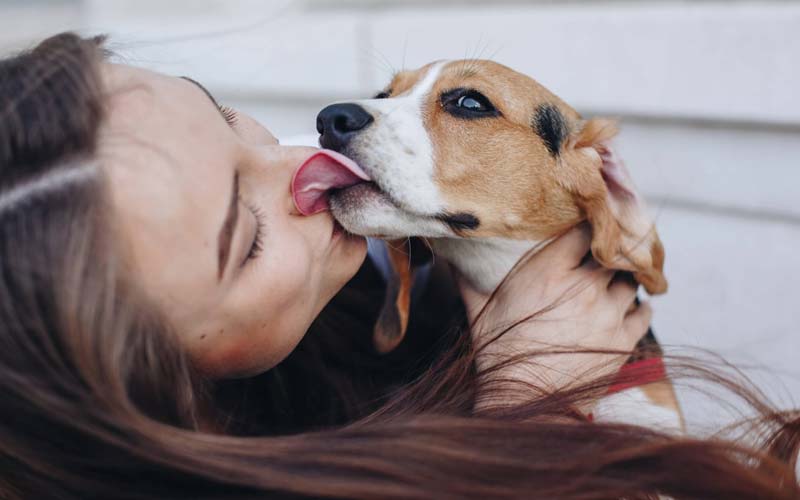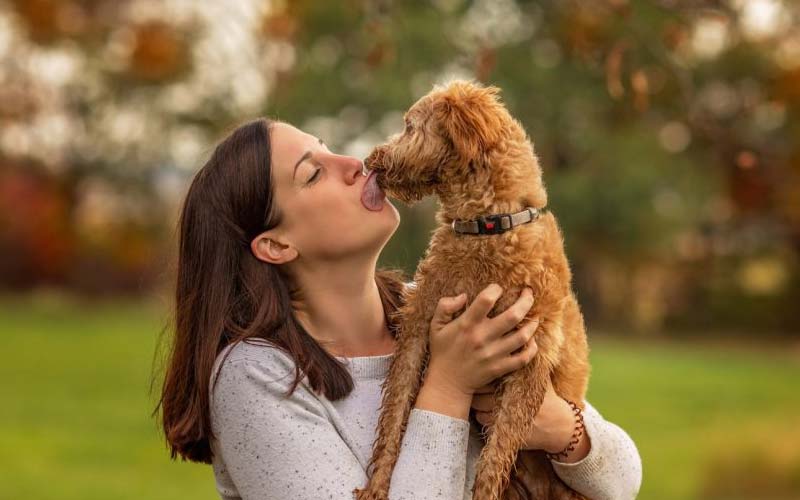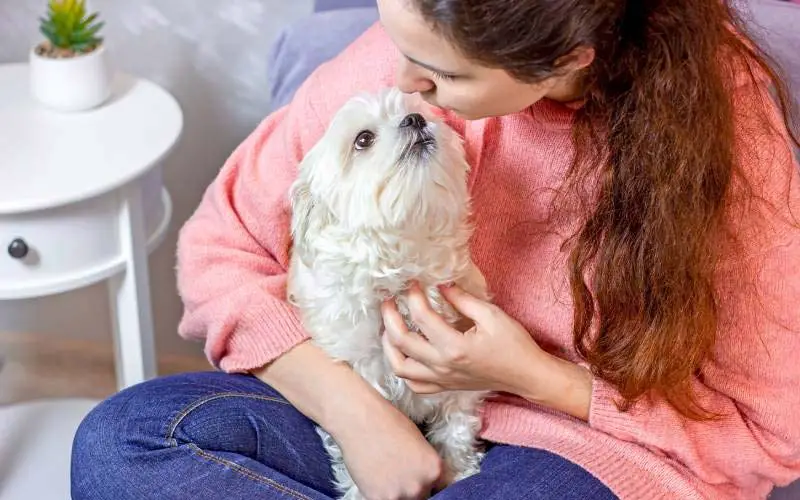Dogs are cherished members of our families, and we often express our love for them in human ways, like giving kisses. But have you ever wondered how your dog perceives this affectionate gesture? Do they understand it as a sign of love, or does it leave them feeling confused or uncomfortable?

Unlike humans, dogs communicate through body language, scent, and actions, not kisses or verbal expressions. While some dogs may tolerate or even seem to enjoy a smooch from their favorite person, others might find it puzzling or intrusive. Understanding whether your dog appreciates this form of affection can help you build a stronger, more respectful bond.
In this article, we’ll explore the science and behavior behind how dogs interpret kisses, signs that they may or may not enjoy them, and alternative ways to show your love in ways they truly understand. Whether you’re a seasoned dog owner or new to the world of canine companionship, these insights will help you connect with your furry friend on their terms.
1. Why Do Humans Kiss Dogs?
For many people, kissing is a natural way to express love and affection. This behavior extends beyond human relationships to the bond we share with our pets, particularly dogs. When we kiss our dogs, it’s often a heartfelt gesture symbolizing gratitude, companionship, and emotional connection.
Humans have a tendency to anthropomorphize animals, attributing human-like emotions and behaviors to them. This is why we may instinctively assume that a kiss—a universal sign of affection among humans—holds the same meaning for dogs. Kissing a dog can feel like a way to bridge the communication gap and show them they are loved.
Over time, kissing has become a normalized part of many pet-human interactions. In some households, it’s a routine display of affection, as common as giving treats or belly rubs. Social media and pop culture further reinforce this behavior, showcasing countless images and videos of dogs receiving and sometimes appearing to “give” kisses in return.
While our intentions are rooted in love, it’s essential to remember that dogs experience and express affection differently. Understanding this dynamic allows us to foster a bond that respects both our human tendencies and our dog’s unique perspective.
2. Do Dogs Understand Kisses?
Dogs do not naturally interpret kisses the way humans do. For us, a kiss signifies love and affection, but in the canine world, such behavior does not inherently hold the same meaning. Instead, dogs rely on a combination of body language, tone of voice, and past experiences to understand what a kiss might signify in their specific relationship with their owner.
Body language plays a crucial role in how dogs perceive human actions. When a person leans in for a kiss, some dogs may interpret this as a non-threatening gesture, especially if accompanied by a calm voice and relaxed body posture. Others, however, might feel uneasy, as close facial contact can resemble dominant or aggressive behavior in canine interactions.
A dog’s reaction to kisses often depends on their upbringing and socialization. Dogs raised in environments where kisses are a regular and positive occurrence may learn to associate them with affection and rewards, such as treats or praise. This conditioning helps them feel at ease with the gesture. Conversely, dogs without such experiences may find kisses confusing or even stressful.
By understanding that kisses are not instinctively meaningful to dogs, owners can tailor their expressions of affection in ways that align with their pet’s comfort and unique personality.

3. Signs Your Dog Likes Kisses
Every dog is unique, and while some may genuinely enjoy kisses from their human companions, others may simply tolerate them. Recognizing the signs that your dog is comfortable with this gesture is key to ensuring your interactions are positive and respectful.
Dogs that enjoy kisses often display relaxed and happy body language. They may wag their tails in a loose, sweeping motion, indicating excitement or contentment. A dog that leans into you during the interaction, maintains soft eye contact, or even licks you back is likely reciprocating your affection. Some dogs might nuzzle or press their heads against you, further demonstrating that they feel at ease.
It’s important to pay close attention to your dog’s individual preferences. Even within the same breed, responses to kisses can vary widely. A dog that has been conditioned to associate kisses with positive outcomes, such as treats or verbal praise, may welcome them enthusiastically.
Always approach your dog gently and watch for signs of discomfort, such as turning their head away or becoming tense. By respecting their boundaries and focusing on cues that indicate comfort and enjoyment, you can ensure your gestures of affection strengthen the bond you share.
4. Signs Your Dog Dislikes Kisses
While some dogs tolerate or enjoy kisses, others find the gesture uncomfortable or even stressful. Knowing how to recognize signs of discomfort can help you avoid unintentionally upsetting your dog and damaging the trust you’ve built.
Dogs that dislike kisses may display subtle or obvious signals of unease. Common signs include:
- Turning Away: If your dog shifts their head or body away from you, they’re likely trying to create distance.
- Avoiding Eye Contact: A dog that looks away or keeps their gaze averted may be signaling discomfort or submission.
- Tense Body Posture: A stiffened body, tucked tail, or flattened ears can indicate anxiety or apprehension.
- Vocalizing: Whining, growling, or barking in response to a kiss suggests that your dog feels threatened or uneasy.
Forcing a dog to accept kisses when they clearly show discomfort can harm your relationship. It may lead to feelings of mistrust or even defensive behavior over time. Dogs thrive on mutual respect and understanding, and ignoring their boundaries can have long-term consequences for your bond.
Instead, pay close attention to their reactions and adjust your interactions accordingly. By respecting their comfort levels, you can maintain a positive and loving connection.

5. Alternatives to Kissing Your Dog
If your dog isn’t fond of kisses, there are many other ways to show affection that will likely be more enjoyable and comfortable for them. Building a strong bond doesn’t have to rely on human behaviors like kissing, and alternative forms of affection can be equally rewarding for both you and your dog.
- Petting: Gentle, soothing petting is a great way to express love. Focus on areas where dogs enjoy being touched, such as behind the ears, on their chest, or along their back. Petting helps to calm and reassure your dog, strengthening the emotional connection.
- Verbal Praise: Dogs often respond well to the sound of their owner’s voice. Use a warm, calm tone to offer praise or affectionate words like “Good girl” or “You’re such a good boy.” This reinforces positive behavior and builds trust.
- Treats and Rewards: A tasty treat can be a powerful way to show your dog that they are loved. Whether it’s a special snack after a training session or simply as a random act of affection, treats can make your dog feel appreciated.
Encouraging respectful interactions, aligned with your dog’s comfort level, is key. Pay attention to their cues and ensure that affection is always a positive experience, reinforcing the bond of mutual respect and love.

Conclusion
Understanding whether dogs like kisses is essential for building a strong, trusting relationship with your pet. While some dogs may enjoy kisses and seek out this form of affection, others may find it intrusive or uncomfortable. By recognizing the signs of both comfort and discomfort, you can ensure that your expressions of love are always welcomed and positive.
Remember, dogs communicate differently than humans, and their responses to kisses depend on their individual personalities, past experiences, and socialization. By paying attention to their body language and respecting their boundaries, you can find other meaningful ways to show affection, such as through petting, verbal praise, or treats.
Ultimately, fostering a respectful and understanding relationship with your dog is the best way to strengthen your bond. Always prioritize your dog’s comfort and happiness, and ensure that every interaction—whether it involves kisses or other forms of affection—promotes trust and mutual respect.
So, take a moment to observe your dog’s reactions and adjust your interactions accordingly. You’ll both be happier and more connected when you engage with your pet in ways that make them feel safe and loved.